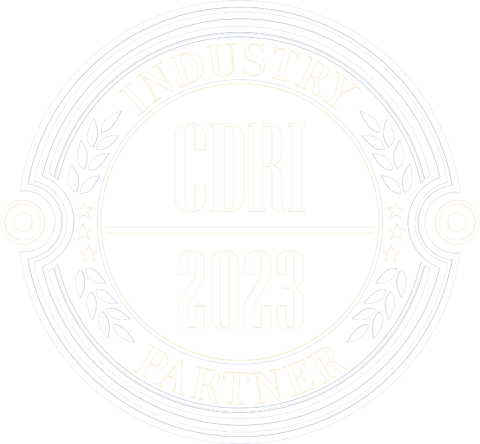IAPDA Certification
I.A.P.D.A General Management


I.A.P.D.A General Management
Click this link to begin the enrollment process: I.A.P.D.A General Management
Pricing
Individual
$350 / each Enroll NowRecertification
$175 Renew NowVolume Discounts Available
- 11 - 25 Credits
- $300
- 26 - 50 Credits
- $250
- 51 - 99 Credits
- $200
- 100 + Credits
- $175
Details
Leading the Consumer Debt Settlement Industry since 2000 with Training, Certification and Professional Development. Bringing the industry's sales and customer service consultants to a minimum standard of excellence, customer protection and product knowledge.
Debt settlement management is an important part of financial management. It involves the negotiation of debt with creditors in order to reduce the amount of debt owed. This process can help individuals and companies reduce their debt, improve their overall financial situation, and rebuild their credit.
The goal of debt settlement management is to help individuals and companies manage their debt in a way that works for them. This involves creating a plan to reduce debt, negotiating with creditors, and managing the settlement process. It is important for debt settlement managers to understand the basics of the process, develop a plan, manage the day-to-day operations, and evaluate performance.
Debt settlement management is a challenging and often stressful process, but it can be a great way for individuals and companies to get back on track financially. This guide will provide an overview of the debt settlement process and provide tips for managing the process effectively.
I. Introduction to Debt Settlement Management
II. The Basics of Debt Settlement
A. Determining the Amount of Debt
B. Negotiating with Creditors
C. Settling the Debt
D. Managing the Settlement Process
III. Developing a Debt Settlement Plan
A. Analyzing the Situation
B. Setting Goals
C. Creating a Budget
D. Developing a Payment Plan
E. Establishing a Timeline
IV. Managing the Day-to-Day of Debt Settlement
A. Communicating with Creditors
B. Documenting Payments and Settlements
C. Reporting to Credit Agencies
D. Handling Disputes
V. Managing Financial Obligations
A. Understanding Credit Scores
B. Managing Credit Card Balances
C. Making Payments on Time
D. Using Credit Responsibly
VI. Managing Expectations
A. Explaining the Process
B. Managing Client Stress
C. Setting Reasonable Goals
VII. Evaluating Performance
A. Tracking Goals
B. Analyzing Performance
C. Identifying Problem Areas
VIII. Wrap-up
A. The Benefits of Debt Settlement
B. Moving Forward
C. Final Thoughts
I.A.P.D.A General Management
The General Management Certification Program covers various aspects involved in managing debt settlement providing a comprehensive overview from initial client assessment to final resolution. The topics include negotiation techniques, legal considerations, compliance with industry standards, regulations, organizational policies, client relations and best practices for documentation and record-keeping. The program reviews ethical guidelines emphasizing the importance of professionalism and integrity as well as principles that should be followed during the debt settlement process.
Articles
-
I.A.P.D.A Management Training Video
Debt settlement management is an important part of financial management. It involves the negotiation of debt with creditors in order to reduce the amount of debt owed. This process can help individuals and companies reduce their debt, improve their overall financial situation, and rebuild their credit. -
I.A.P.D.A Diversity and Equality Training
Diversity and Equality Video Module -
DSI Video Module
Debt Settlement InfoBank
I.A.P.D.A CDS - Training modules [CLONED]
100% Online - The material included in IAPDA certification training program is current (constant updates), complete, and presented in an easy to follow training format. Each certification training course module is supported by copies of consumer debt laws and the debt relief legislation governing the particular subject of that module. There are many articles included that will help you gain a further understanding of each topic in the training. Complete the online multiple choice certification exam when ready.
Articles
-
Module One
Suitability - All Debt Relief Options-Assessing and advising the client on the best debt relief option for them -
Module Two
Understanding the Lending Process -
Module Three
Debt Collection and Collectors -
Module Four
Credit Repair -
Module Five
Negotiation Process & Techniques -
Module Six
Ethical Conduct- A thorough discussion and education of Ethical Business Practices for Debt Settlement Professionals. -
Module Seven
Debtor Client Debt & Credit Counseling Module - Additional client education materials -
Module Eight
U.S. Consumer Debt/Credit Laws -
Module Nine
Member Resources Area - Industry & Legislative information, News & Articles -
Module Ten
Educating Your Client regarding Credit Counseling and Debt Management Plans -
Module Eleven
Educating Your Client in Personal Finance -
Module Twelve
Consumer Credit Counseling & Debt Management Plans
I.A.P.D.A / DSInfobank
• What is DSI
• What is an issuer, debt buyer, collection agency or law firm
• What we do and why
• Processes
• What is permissible purpose in our space
• Security & compliance
• What NOT to do
• Why DSI
• Data rules and regulations at a glance
Articles
-
IAPDA / DSInfobank Video Module
IAPDA / DSInfobank Video Module
I.A.P.D.A Diversity and Equality Training
This comprehensive certification program aims to provide participants with the knowledge, skills, and tools needed to understand, appreciate and advocate for diversity and equality within their personal and professional lives. The course will explore the concept of unconscious bias and its implications in professional settings. Participants will gain insights into recognizing unconscious biases and learn strategies to overcome them, enabling fair and equitable decision-making processes in the workplace.
Articles
-
I.A.P.D.A Diversity and Equality Training
I. Introduction to Diversity and Equality A. Definition of Diversity and Equality B. Benefits of Diversity and Equality C. Challenges of Diversity and Equality II. Creating a Diverse and Equal Environment A. Establishing a Non-Discriminatory Environment B. Developing and Implementing Policies C. Training Staff and Managers III. Educating Staff on Diversity and Equality A. Understanding Unconscious Bias B. Recognizing and Preventing Harassment C. Anti-Discrimination Laws IV. Implementing Inclusive Practices A. Creating an Inclusive Workplace B. Identifying and Addressing Barriers C. Promoting Inclusive Leadership V. Encouraging Diversity and Equality A. Encouraging Employee Participation B. Utilizing Communication Strategies C. Developing Diversity and Equality Goals VI. Evaluating and Updating Policies A. Reviewing Existing Policies B. Updating Policies and Procedures C. Measuring Progress and Outcomes VII. Conclusion
Click this link to begin the enrollment process: I.A.P.D.A General Management




